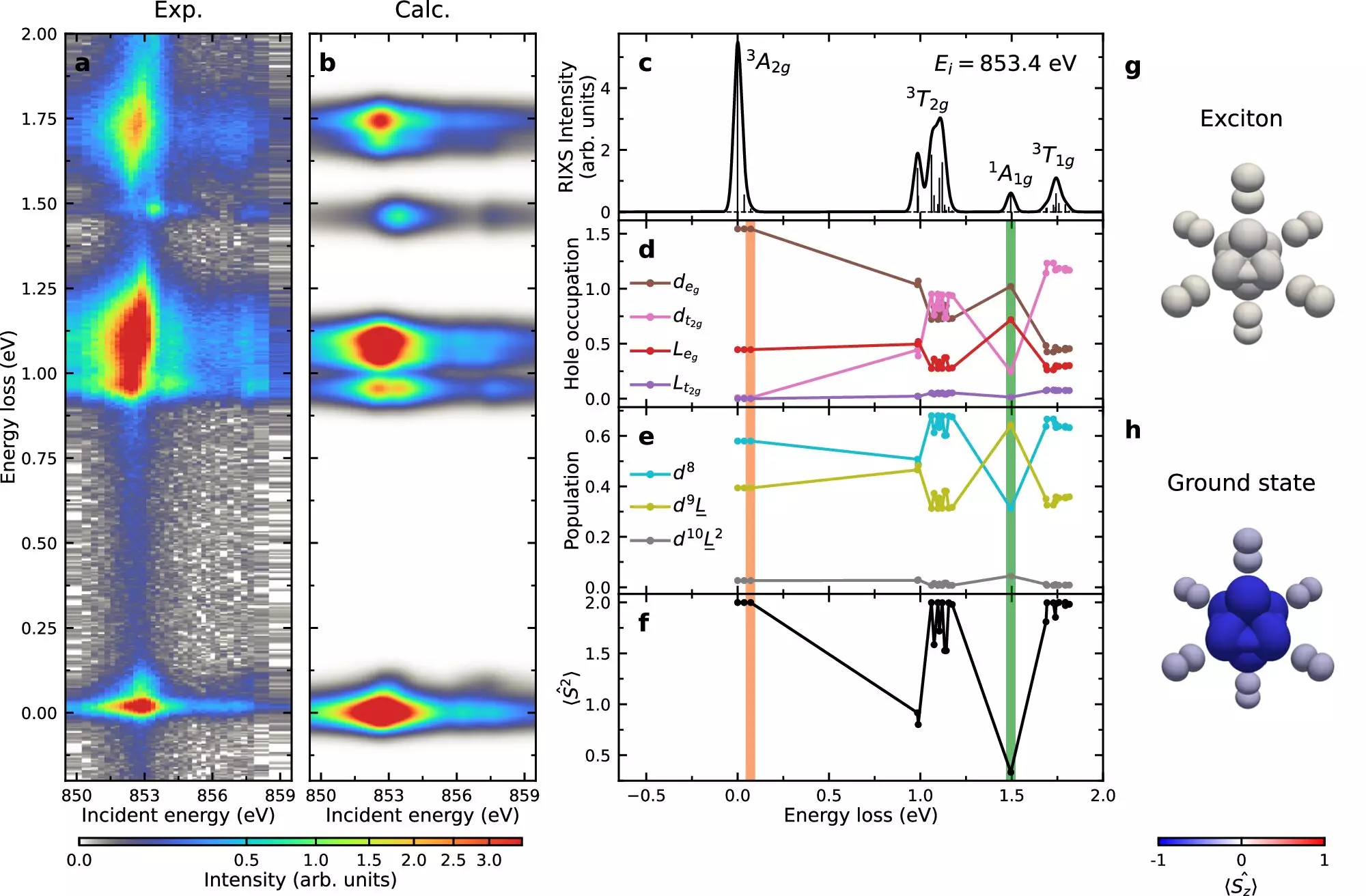Recent advancements in material science have brought forward the exploration of van der Waals magnets—materials that possess unique optical and magnetic properties. A notable study conducted by a team at the U.S. Department of Energy’s Brookhaven National Laboratory has unveiled compelling evidence surrounding the behavior of excitons within these intricate materials. This research has the potential to reshape our understanding of magnetic materials and could lead to innovative applications in information technology, particularly in data storage solutions.
Excitons, which are defined as quasi-particle excitations formed when an electron pairs with a “hole” (an absence of an electron in a material’s crystal lattice), are central to the magnetic behavior of certain materials. These composite entities behave like particles, showcasing the capacity to move through a crystalline lattice autonomously. The Brookhaven team’s investigation into nickel phosphorus trisulfide (NiPS3) revealed significant insights into how these excitons interact with the material’s magnetic structure. Their findings may well illuminate new pathways for manipulating excitons via magnetic control, hinting at groundbreaking technological applications.
To delve into the elusive characteristics of excitons within NiPS3, the research team employed high-resolution experimental techniques available at the National Synchrotron Light Source II (NSLS-II). Utilizing resonant inelastic X-ray scattering (RIXS), they were able to explore the complex energy behaviors of the material at an unprecedented level of detail. Through the scattering of focused X-ray beams, they captured essential data on the momentum and energy of excitons, allowing for an in-depth analysis of their structure and mobility.
A significant aspect of this research lies in the revelation of the interplay between excitons and the Hund’s exchange interaction. This fundamental physical principle describes how electron spins align and interact, providing the necessary energy conditions for exciton formation in NiPS3. The findings indicated that excitons do not merely exist in isolation; their dynamics are tightly interwoven with the magnetic properties of the material, governed by the mechanics of spins at the quantum level. By mapping the exciton dispersal within the crystal, the research aligns with existing theories about collective spin excitations known as magnons, further complicating the relationship between electronic and magnetic phenomena.
Understanding the nuances of exciton dynamics opens a Pandora’s box of opportunities for future research. As authors of the study, including physicist Mark Dean and postdoctoral researcher Wei He, noted, the efficacy of advanced experimental techniques like RIXS paves the way for more thorough investigations. Continued enhancement of these technologies could yield more profound insights into the behaviors exhibited by NiPS3 and similar materials. These breakthroughs will pave the road toward new discovery paradigms in solid-state physics, particularly concerning phenomena that intertwine magnetism and light.
The work carried out by the scientists at Brookhaven National Laboratory not only advances our understanding of excitons and their interaction with magnetic structures but also lays the groundwork for potential next-generation technologies. As magnetism becomes a crucial factor in computing and data storage, studies like this one underscore the vital role of material science in reclaiming efficiency and capability in technological applications. The promise held by excitons in van der Waals magnets could very well define future innovations in information technology, transforming the landscape of how data is stored and managed in the digital age.


Leave a Reply